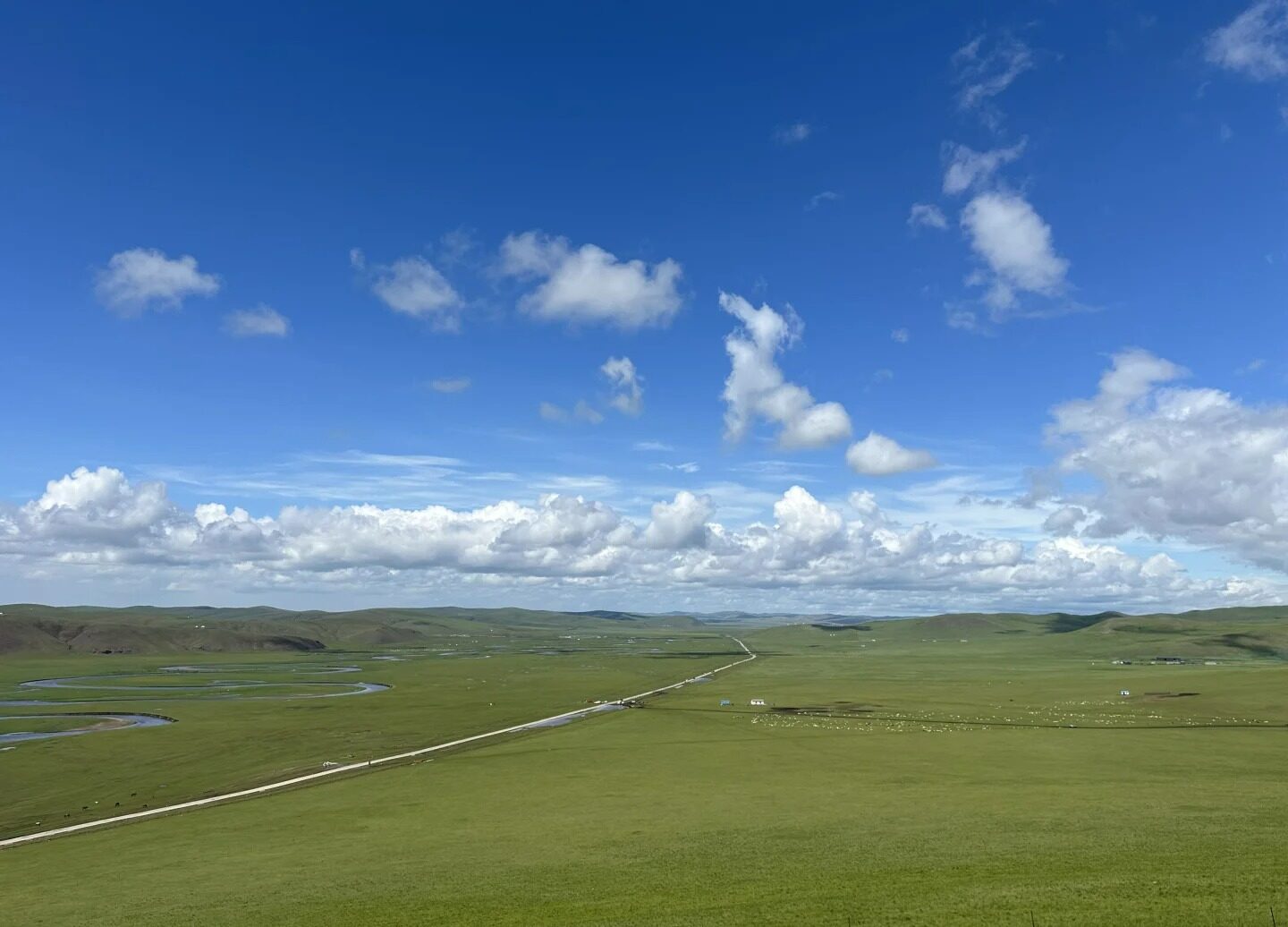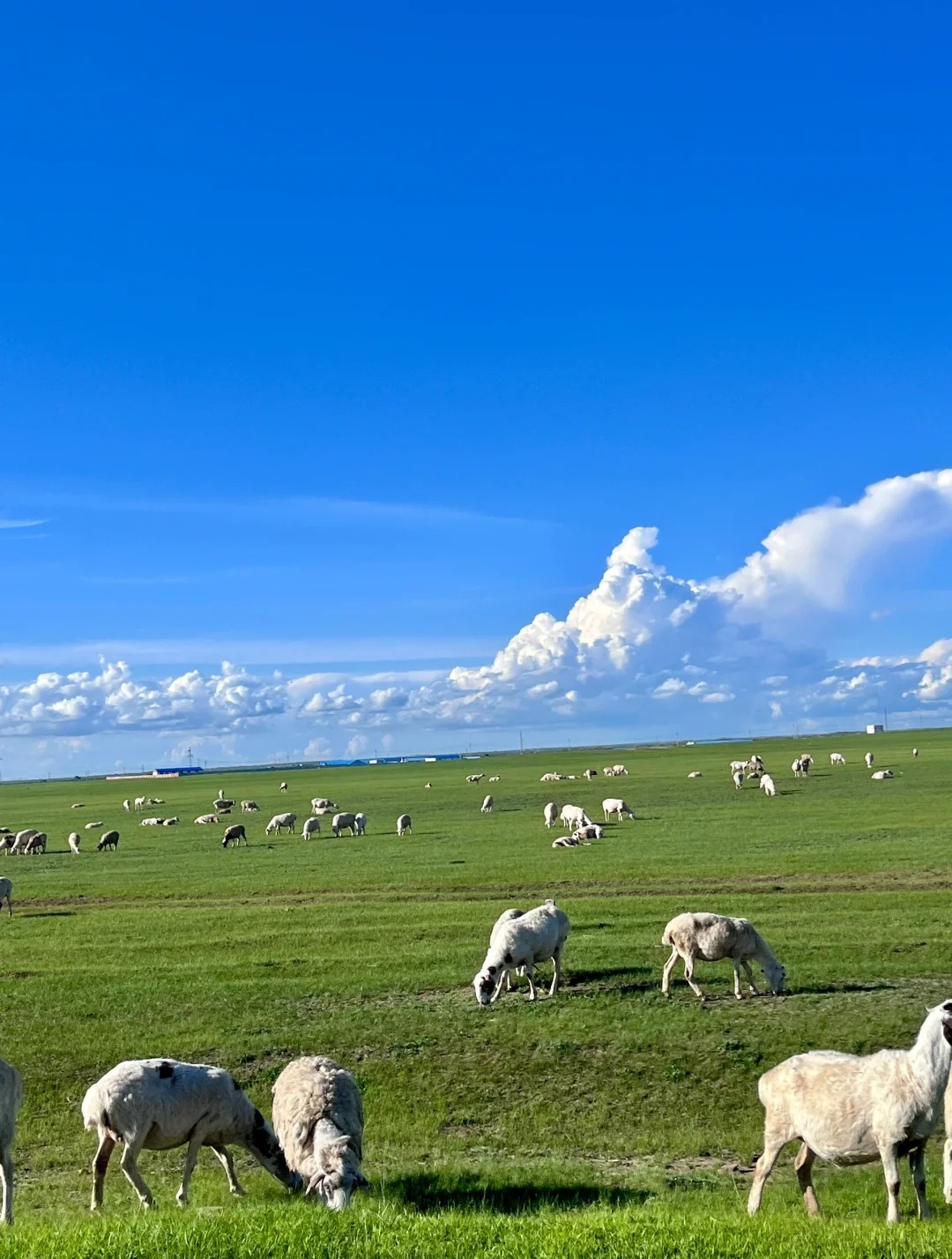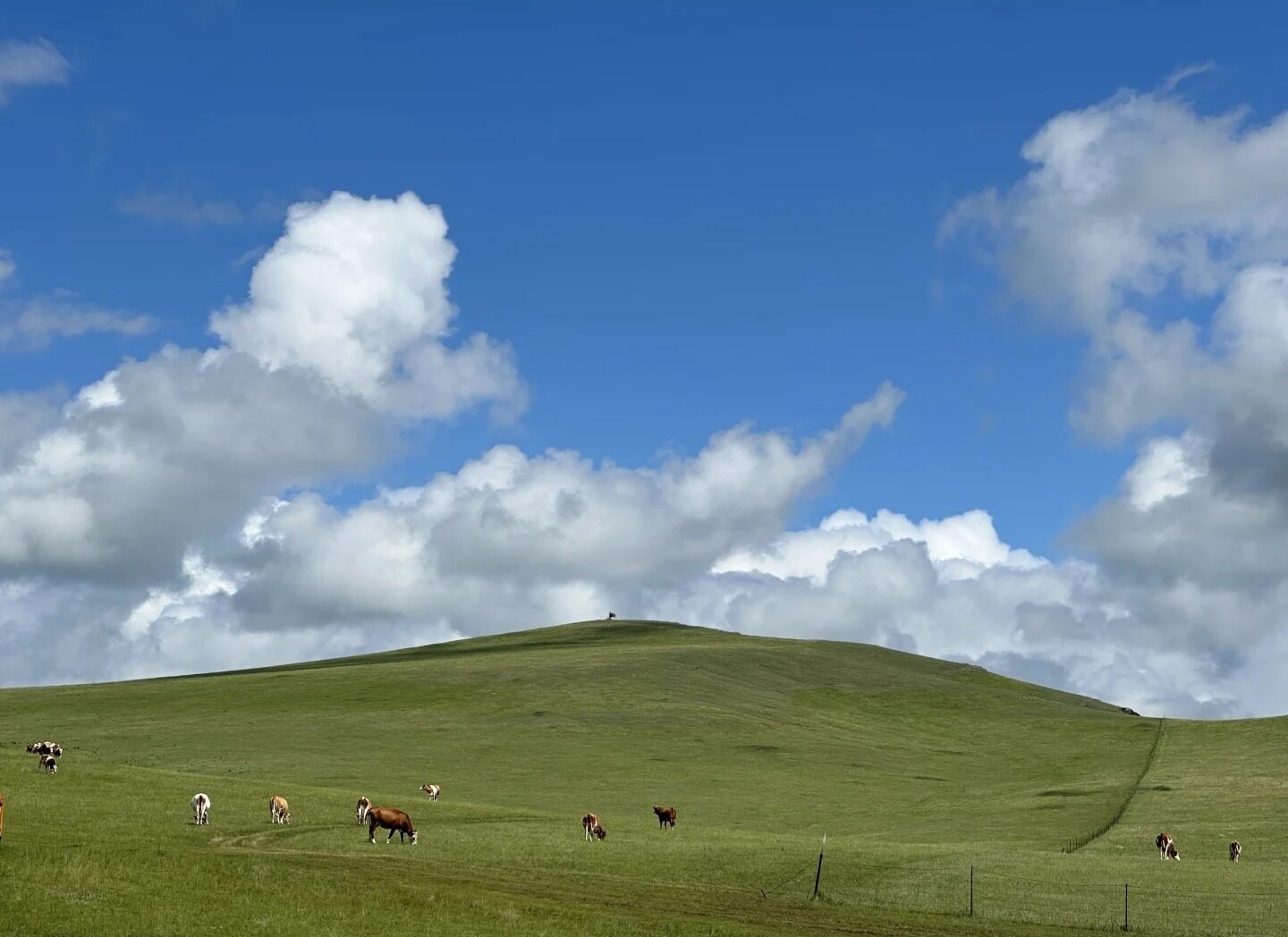Visiting Information
| Information | Details |
|---|---|
| Chinese Name | 呼伦贝尔草原 (Hūlún Bèi’ěr Cǎoyuán) |
| Location and Address | Hulun Buir City, Inner Mongolia Autonomous Region, China |
| Opening Time/Hours | Open all year round, best visited from June to September |
| Entrance Fee | Varies depending on specific scenic areas, generally 50-100 CNY per person |
| How to Get There | By Plane: Fly to Hailar Dongshan International Airport By Train: Take a train to Hailar Railway Station By Bus: Take long-distance buses from major cities to Hailar By Taxi: Available within Hailar city for local transportation |
| Best Time for Visit | June to September for the best weather and scenery |
| Contact Info | Hulun Buir Tourism Bureau: +86 470 8222682 |
Overview
Hulun Buir Grassland, located in northeastern Inner Mongolia, is one of the largest and best-preserved grasslands in the world. Spanning an area of approximately 93,000 square kilometers, it is known for its vast expanse of lush green meadows, diverse ecosystems, and rich cultural heritage. The grassland is home to numerous ethnic groups, including Mongols, Evenki, and Daur, and offers visitors a unique glimpse into traditional nomadic lifestyles and customs.
Historical Background
The Hulun Buir Grassland has a history dating back thousands of years. It was an important region along the ancient Silk Road and played a significant role in the development of nomadic cultures in Northeast Asia. The area has been inhabited by various ethnic groups, including the Xiongnu, Xianbei, Khitan, and Mongols. During the Yuan Dynasty, it became an important part of the Mongol Empire. The region’s strategic location made it a contested area between different powers throughout history, including Russia and China. Today, it stands as a testament to the enduring nomadic cultures of Inner Mongolia and serves as an important ecological and cultural preservation area.

Architectural Features
- Mongolian Yurts: Traditional Mongolian yurts, known as “gers,” are iconic structures found throughout the Hulun Buir Grassland. These circular, portable dwellings are made of a wooden frame covered with felt or skins. Yurts are designed to be easily assembled and disassembled, perfect for the nomadic lifestyle of the grassland inhabitants. Many tourist camps in Hulun Buir offer visitors the chance to stay in these traditional dwellings, providing an authentic experience of grassland life.
- Oboo Structures: Oboos are sacred stone cairns found throughout the grassland. These pyramid-shaped piles of rocks are typically located on hilltops or other prominent locations. They serve as religious sites for Mongolian shamanic and Buddhist practices. Travelers often circle these structures clockwise and add a stone to the pile for good luck. The design and placement of oboos reflect the spiritual connection between the nomadic people and their environment.
- Evenki Reindeer Camps: In the forested areas of Hulun Buir, particularly in the Genhe region, visitors can find unique settlements of the Evenki people, one of the few remaining reindeer-herding cultures in the world. These camps feature traditional Evenki dwellings known as “dju,” which are conical structures made of birch bark or animal skins supported by wooden poles. The layout and construction of these camps are adapted to the nomadic lifestyle of reindeer herding in the taiga ecosystem.
Cultural Importance
Hulun Buir Grassland holds immense cultural significance as a cradle of nomadic civilizations in Northeast Asia. It is a living repository of traditional Mongolian, Evenki, and Daur cultures, preserving ancient practices, customs, and ways of life that have largely disappeared elsewhere. The grassland is central to the identity of these ethnic groups, influencing their music, art, cuisine, and spiritual practices. Traditional festivals such as the Nadam Fair showcase horsemanship, wrestling, and archery, reflecting the skills valued in nomadic societies. The area’s importance in maintaining linguistic diversity is also significant, as it is home to speakers of endangered languages like Evenki and Daur. As a crossroads of cultures, Hulun Buir Grassland continues to play a vital role in cultural exchange and preservation in the region.
Surrounding Attractions
- Hulun Lake and Buir Lake: These two large freshwater lakes give the region its name and are significant natural landmarks. Hulun Lake, also known as Dalai Lake, is the fifth-largest freshwater lake in China and is renowned for its scenic beauty and rich biodiversity. It’s an important stopover for migratory birds and offers opportunities for boating and fishing. Buir Lake, straddling the China-Mongolia border, is known for its clear waters and surrounding grasslands. Both lakes play crucial roles in the local ecosystem and nomadic culture.
- Arxan National Forest Park: Located in the northeastern part of Hulun Buir, Arxan National Forest Park is famous for its pristine forests, hot springs, and volcanic landscapes. The park features numerous hot springs with reputed medicinal properties, as well as unique geological formations like the Underground Forest. Visitors can enjoy hiking trails that wind through dense forests and past crystal-clear streams, offering a stark contrast to the open grasslands.
- Genhe Wetlands: The Genhe Wetlands, situated in the northern part of Hulun Buir, is China’s largest and best-preserved freshwater wetland ecosystem. It’s home to a diverse array of plant and animal species, including many rare and endangered ones. The area is particularly known for its population of wild reindeer and the Evenki people who herd them. Visitors can explore the wetlands through boardwalks and observation towers, gaining insight into this unique ecosystem.
- Manzhouli City: Often called the “Window of East Asia,” Manzhouli is a border city known for its unique blend of Russian, Mongolian, and Chinese cultures. The city features distinctive architecture, including the famous Matryoshka Square with its giant nesting doll structures. Visitors can explore the bustling international market, sample diverse cuisines, and experience the vibrant border town atmosphere, making it a fascinating contrast to the natural beauty of the surrounding grasslands.

Photography Opportunities
- Vast Grassland Landscapes: The expansive, undulating grasslands of Hulun Buir offer breathtaking panoramic views that are a photographer’s dream. During summer, the endless sea of green grass dotted with wildflowers creates stunning compositions, especially during the golden hours of sunrise and sunset. The interplay of light and shadow across the rolling hills can produce dramatic and evocative images that capture the essence of the grassland’s beauty.
- Nomadic Life and Culture: The traditional lifestyle of the grassland’s inhabitants provides unique photographic subjects. Capture images of Mongolian horsemen galloping across the plains, herds of sheep and cattle grazing on the lush grass, or the intricate details of traditional costumes during festivals. The colorful Mongolian yurts set against the vast landscape create striking visual contrasts.
- Wildlife and Birdlife: Hulun Buir’s diverse ecosystems support a rich variety of wildlife. Photographers can capture images of wild horses, deer, and various bird species in their natural habitats. The Hulun Lake area is particularly good for bird photography, especially during migration seasons when large flocks of waterfowl gather.
- Seasonal Variations: Each season offers unique photographic opportunities in Hulun Buir. Spring brings new life and blooming wildflowers, summer showcases the lush green grasslands, autumn paints the landscape in golden hues, and winter transforms the area into a stark, snow-covered wonderland. The changing seasons provide diverse backdrops for landscape and nature photography throughout the year.
Modern Importance
- Ecological Conservation: Hulun Buir Grassland plays a crucial role in maintaining ecological balance in northeastern China. As one of the world’s largest and best-preserved temperate grasslands, it acts as a significant carbon sink and helps combat desertification. The area’s biodiversity, including numerous rare and endangered species, makes it an important site for conservation efforts and scientific research. The grassland’s health is closely monitored as an indicator of climate change impacts in the region.
- Cultural Preservation: In an era of rapid modernization, Hulun Buir serves as a living museum of nomadic cultures. It provides a space where traditional ways of life, languages, and customs of ethnic minorities like the Mongols, Evenki, and Daur can be preserved and passed on to future generations. This cultural preservation is not only important for maintaining diversity but also for understanding sustainable ways of living in harmony with nature.
- Sustainable Tourism: The grassland has become a model for eco-tourism development in China. By balancing tourism with environmental protection and cultural preservation, Hulun Buir demonstrates how natural areas can be economically valuable without compromising their ecological integrity. This approach to tourism provides economic opportunities for local communities while educating visitors about grassland ecosystems and nomadic cultures.
- Agricultural Resources: Despite its protected status, parts of Hulun Buir Grassland continue to play a significant role in China’s agriculture and animal husbandry. The vast grasslands support large herds of cattle and sheep, contributing to the country’s meat and dairy production. However, there’s an ongoing effort to balance these economic activities with sustainable land management practices to prevent overgrazing and maintain the grassland’s ecological health.

FAQ
- What is Hulun Buir Grassland famous for?
Hulun Buir Grassland is famous for its vast, pristine grasslands, rich biodiversity, and preservation of traditional nomadic cultures of Mongolia and northern China. - What’s inside Hulun Buir Grassland?
Inside Hulun Buir Grassland, you’ll find expansive meadows, lakes (including Hulun and Buir Lakes), diverse wildlife, nomadic settlements, and cultural sites like Oboo cairns. - Is Hulun Buir Grassland free?
While the grassland itself is free to access, specific scenic areas within Hulun Buir may charge entrance fees, typically ranging from 50-100 CNY per person. - Is Hulun Buir Grassland worth visiting?
Yes, Hulun Buir Grassland is worth visiting for its stunning natural beauty, unique cultural experiences, and opportunities to witness traditional nomadic lifestyles. - What to do in Hulun Buir Grassland?
In Hulun Buir Grassland, you can ride horses, stay in traditional yurts, attend cultural festivals, observe wildlife, enjoy photography, and explore surrounding attractions like lakes and forests. - How do I get to Hulun Buir Grassland in the local city?
To reach Hulun Buir Grassland, fly or take a train to Hailar city. From Hailar, you can join organized tours or hire a car to explore different parts of the grassland. - How to visit Hulun Buir Grassland?
To visit Hulun Buir Grassland, plan a trip between June and September for the best weather. Book accommodations in Hailar or at grassland resorts, and consider joining guided tours to fully experience the vast area and its cultural sites. Respect local customs and environmental regulations during your visit.



